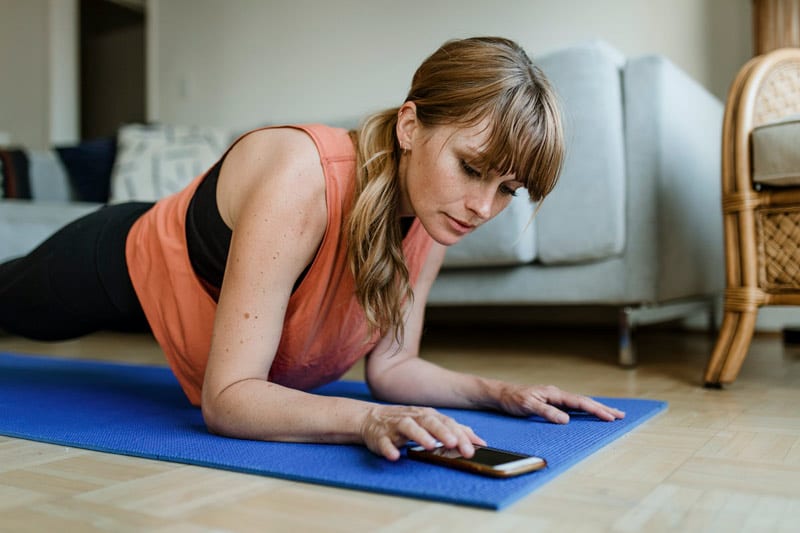2020 brought changes to all of us. For me, it was the year when my baby boy was born just as the pandemic took control over the world; I had him just before the lockdown started. Coping with the anxiety of being a new mother and the extra stress Covid-19 brought to our life wasn’t easy. To support my daily battle with everything, I found myself on my yoga mat as soon as I was physically able to.
I wasn’t alone in this. As the lockdown kept most people home, offices turned remote, resulting in an increase in the number of home yoga practitioners, allowing people who’ve been considering starting their yoga journey to take that first step. A variety of classes became available online, and many teachers offered a concession for those in need.
On the other hand, some people only had a chance to take time for themselves when they attended an in-person yoga class away from it all. For them, it might have been a struggle to fit yoga into their family and work duties (or even find a corner for their mat). They had to alter their practice to a great extent. Finding space and peace could be an additional difficulty when someone does yoga at home, and delivering a class without connecting with the students can be challenging for a teacher.
However, this is not the only challenge teachers have been facing. As studios and gyms closed, many decided to continue with online classes and often got lost in the maze of zoom, microphones, weak wireless connections, and getting the right camera angles. I saw many teachers overcoming these problems and supporting each other, the tech-savvy ones offering help, sharing zoom tips, and resolving various issues.
Regardless of the channel of delivery, yoga can be a helpful tool in these uncertain times when many of us feel everything is slipping out of our control. Anxiety and stress levels are rising, caused by various changes in life.
How can yoga, breathing techniques, and meditation help?
The breathing technique pranayama is one of the eight limbs of yoga, crucial to the physical (asana) practice. It also supports meditation. Alongside other ways of coping, pranayama can help ease these thoughts and physical reactions.
The meaning of pranayama is breath control, but prana also means lifeforce, so mastering the breath possibly supports taking a bit more control over our life. Physiologically speaking, pranayama brings breath control to a conscious level. Conscious breath can activate the parasympathetic branch of the autonomic nervous system. This branch often associated with ‘rest and digest’; ‘calm and control’) so our body can achieve a state when we could let go of the constant alertness of the sympathetic nervous system (associated with ‘fight or flight’).
Another psychological effect of yoga mentioned in studies is that yoga elevates the brain’s Gamma-aminobutyric acid (GABA) levels, resulting in lessened symptoms of anxiety disorders and depression.
Besides all these scientific proofs, my uptake on this is that yoga makes me feel more ‘together’ even if I only have 10-15 minutes to practice. It helps me connect to myself and helps me connect to the ground that might feel shaky sometimes. My lungs are expanding with each breath; I can feel the tight ropes of anxiety ease; with each move, I feel a bit stronger and in control.
2020 is the year of letting go and reinvention. Whether we wanted it or not, the pandemic had some impact on us. Many of us had to rethink our lives, and start over again, learn something new, adapt to a smileless word of face covers, hygiene, and safety routines.
In the midst of this, we have to look after not just our physical health but our emotional and psychological wellbeing. For some people, this will be a walk or a run; for some people, this will be a very nicely prepared dinner or a hot shower; or for some of us, a deep breath, yoga, and meditation.

Photo by Alessio Billeci on Unsplash
The opinions and views expressed in any guest blog post do not necessarily reflect those of www.rtor.org or its sponsor, Laurel House, Inc. The author and www.rtor.org have no affiliations with any products or services mentioned in the article or linked to therein. Guest Authors may have affiliations to products mentioned or linked to in their author bios only.
Recommended for You
- How a Health Cleanse Can Reset Your Body and Mind - April 16, 2025
- The Truth about Relapse in Addiction Recovery - April 14, 2025
- The Power of Peer Support in Mental Health Recovery - April 10, 2025





